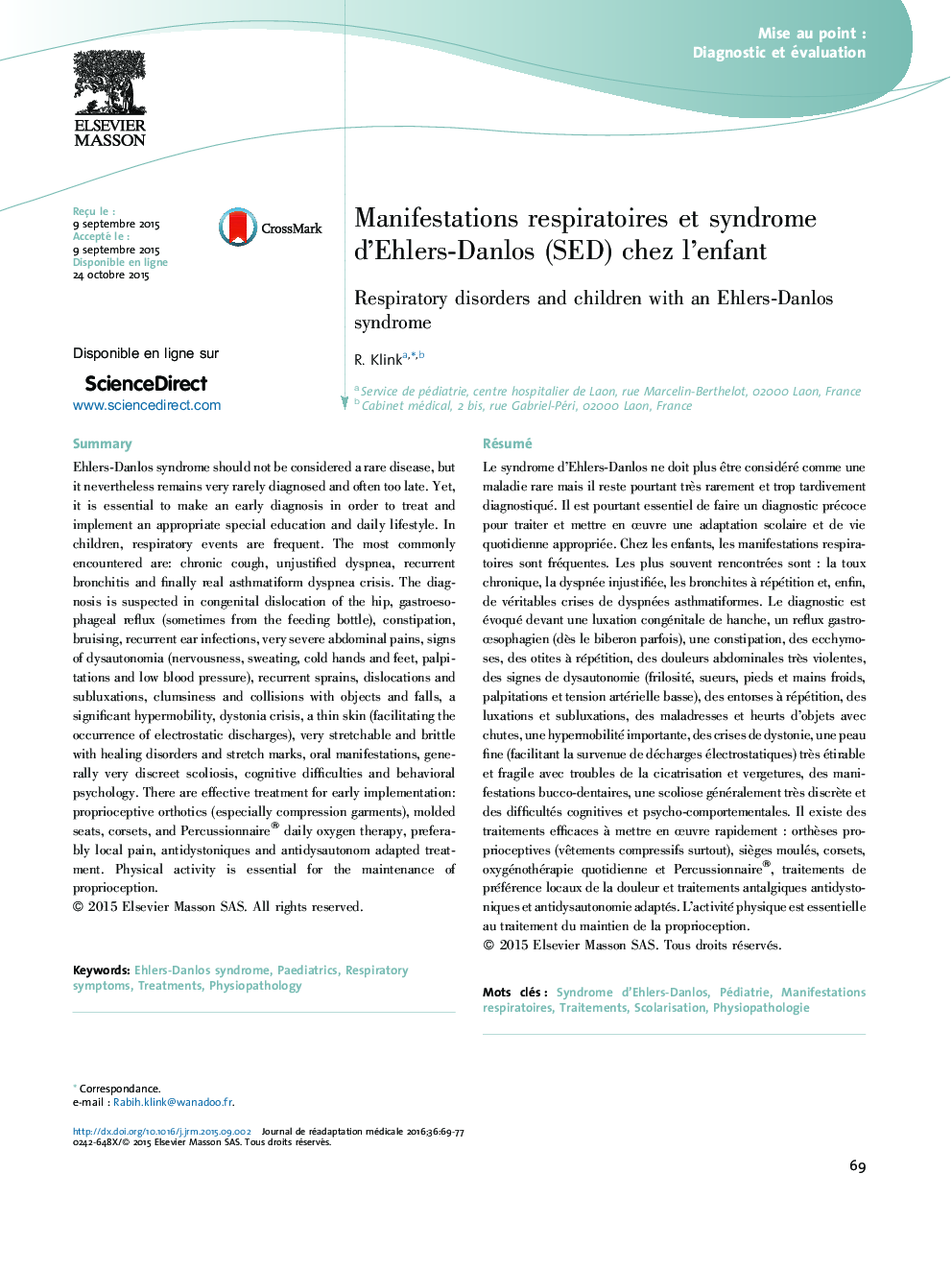| Article ID | Journal | Published Year | Pages | File Type |
|---|---|---|---|---|
| 2700804 | Journal de Réadaptation Médicale : Pratique et Formation en Médecine Physique et de Réadaptation | 2016 | 9 Pages |
Abstract
Ehlers-Danlos syndrome should not be considered a rare disease, but it nevertheless remains very rarely diagnosed and often too late. Yet, it is essential to make an early diagnosis in order to treat and implement an appropriate special education and daily lifestyle. In children, respiratory events are frequent. The most commonly encountered are: chronic cough, unjustified dyspnea, recurrent bronchitis and finally real asthmatiform dyspnea crisis. The diagnosis is suspected in congenital dislocation of the hip, gastroesophageal reflux (sometimes from the feeding bottle), constipation, bruising, recurrent ear infections, very severe abdominal pains, signs of dysautonomia (nervousness, sweating, cold hands and feet, palpitations and low blood pressure), recurrent sprains, dislocations and subluxations, clumsiness and collisions with objects and falls, a significant hypermobility, dystonia crisis, a thin skin (facilitating the occurrence of electrostatic discharges), very stretchable and brittle with healing disorders and stretch marks, oral manifestations, generally very discreet scoliosis, cognitive difficulties and behavioral psychology. There are effective treatment for early implementation: proprioceptive orthotics (especially compression garments), molded seats, corsets, and Percussionnaire® daily oxygen therapy, preferably local pain, antidystoniques and antidysautonom adapted treatment. Physical activity is essential for the maintenance of proprioception.
Keywords
Related Topics
Health Sciences
Medicine and Dentistry
Orthopedics, Sports Medicine and Rehabilitation
Authors
R. Klink,
